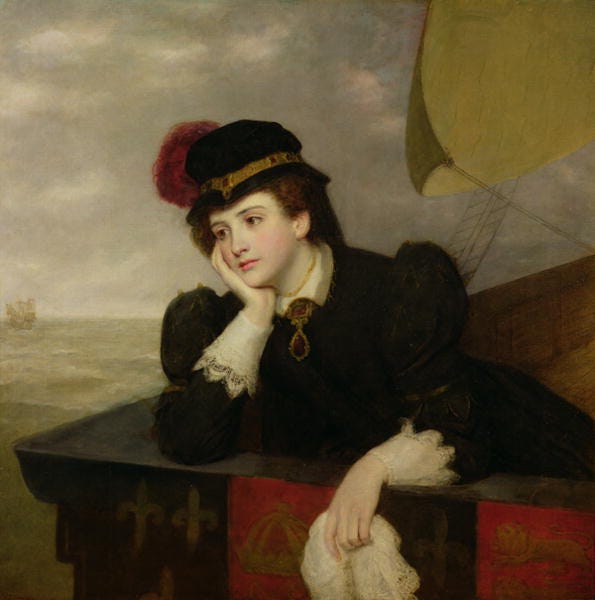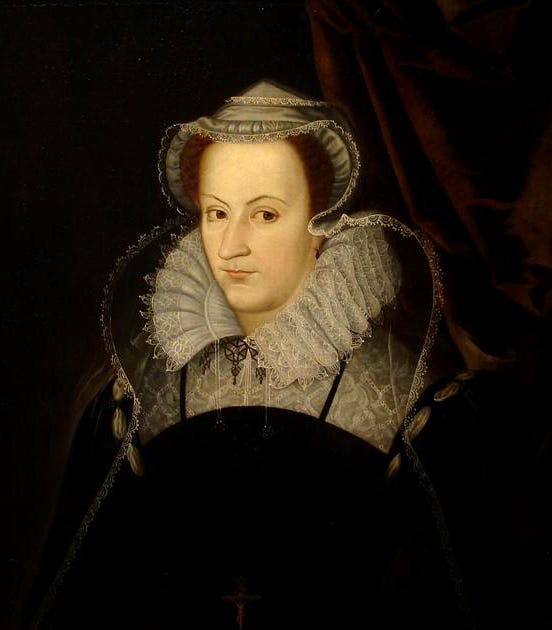Unearthing Mary Stuart's Hidden Letters: A Historical Breakthrough
Written on
Chapter 1: The Discovery of Mary Stuart's Letters
Recently, over fifty letters penned by Mary Stuart were uncovered in the archives of the French National Library. These letters were encoded using a cipher created by the Scottish queen herself. The successful decryption of these letters has provided insights into her communications with supporters during her imprisonment.

Mary Stuart, the Queen of Scotland and a rival to Queen Elizabeth I of England, met her tragic end 436 years ago on February 8, 1587. Before her execution, she spent nineteen years in captivity under Elizabeth's orders. Raised in the French court, she was educated by her mother-in-law, Catherine de Medici, who emphasized the importance of discretion in political matters. This included safeguarding her correspondence with meticulous care.
In her later years, Mary developed intricate ciphers for her letters sent to allies in England and beyond, opting for symbols she had devised rather than standard letters. The effectiveness of her ciphers led to her secret correspondence being considered lost—until now.
Chapter 2: Amateur Cryptologists Crack the Code
George Lasry, Norbert Biermann, and Satoshi Tomokiyo, three amateur cryptologists who have yet to meet in person, have dedicated themselves to unraveling historical ciphers. Lasry, a computer scientist, discovered the letters while exploring digitized collections at the National Library of France in 2018. He found a trove of 16th-century letters written in symbols and marked as related to Italian affairs.
These letters presented an intriguing challenge. With neither the author nor the language identified, Lasry reached out to Biermann, a pianist and music professor, and Tomokiyo, a physicist and patent expert, to collaborate on the project.
“No one had any idea these were letters from Mary Stuart, which is why historians overlooked them,” Lasry noted. “It took enthusiasts like us, who are passionate about deciphering codes, to take interest.”
The first video discusses the decryption of Mary Stuart’s letters and the historical context surrounding them.
Chapter 3: The Complexity of the Cipher
The letters comprised 57 pieces and contained roughly 50,000 words, utilizing 191 unique symbols. This complexity indicated that the cipher was not merely a simple substitution but rather a sophisticated system where multiple symbols could represent a single letter. The cryptologists employed various language simulations to find a solution.
The breakthrough came when they identified French as the key to deciphering the text. After countless attempts, they began to recognize words, eventually leading them to conclude that the author was a woman in captivity, a mother. A recurring name, “Walsingham,” caught their attention—Francis Walsingham being a key figure in Elizabeth I's court.
“We started to suspect these letters belonged to Mary,” Lasry recalled. “However, when we approached historians, they dismissed our findings as impossible.”

Chapter 4: Insights from Mary’s Letters
Deciphering the letters required a shift from digital tools to manual methods, as certain names and phrases were encrypted separately. Months of meticulous effort were spent deciphering the symbols during late nights and weekends.
Once the cipher was fully decoded, the three cryptologists presented their findings to historian John Guy, an authority on Mary Stuart's life. He proclaimed this discovery the most significant revelation about the Scottish queen in a century, calling it a “truly historical sensation.”
The letters date from 1578 to 1584 and many were addressed to Michel de Castelnau de Mauvissière, the French ambassador. They discuss Mary's dire situation, her health, and her political concerns, reflecting her skepticism about negotiations with Elizabeth I and her distrust of Walsingham, as well as her fears regarding her son, James.
“These letters are complex and extensive, offering historians a wealth of material to study for years,” Lasry commented. This remarkable discovery is detailed in a special issue of the journal Cryptologia, published on the anniversary of Mary Stuart’s execution.
The second video explores how codebreakers decoded the secrets of Mary Queen of Scots' letters, revealing historical insights.